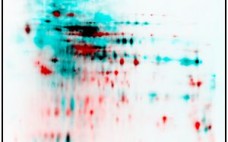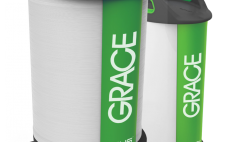This webcast features: Jamina Fiedler, Head of 2D Analytics at BioGenes GmbH. Biopharmaceutical products need to be free of contaminating host cell proteins (HCPs) prior to approval and regulatory bodies ask for a clear and manifest proof that HCP assays are fit for purpose. The colorimetric 2D Western Blot method, although widely used for HCP detection and coverage determination, has several limitations. Using examples, webinar participants will learn how the use of fluorescent dyes can help overcome these limitations to…
Webinars
A New Incompressible Protein A Resin to Improve Downstream Productivity in Single-Use Applications
This webcast features: Dr. Kiran Chodavarapu, Bioprocessing Business Development Manager at W.R. Grace. Implementation of single-use technologies and higher antibody titers upstream have put increasing pressure on downstream processes to improve efficiencies and keep pace with upstream advancements. There continues to be a lag in the development and adoption of single-use technologies in downstream – particularly in the area of chromatography. To help achieve the vision of a fully disposable and flexible manufacturing platform that addresses the current bottleneck in…
Optimization of HEK 293 and CHO Cell Culture Media Supplementation by DoE Methodology
This webcast features: Dr. Francesc Gòdia, Professor of Chemical Engineering at Universitat Autònoma de Barcelona Chemically defined and animal derived free components media are required for bioprocess development and operation using mammalian cell as platform for the production of biopharmaceuticals. The supplementation of commercial chemically-defined media with specific compounds is studied for the optimization of CHO and HEK 293 cell culture. Design of Experiments approach is used to first screen the most efficient compounds and further determine their optimal conditions.…
Your Shake Flask is not a Black Box Anymore! Online Measurements of Metabolic Activity Accelerate Your Bioprocess Development
This webcast features: Dr. Gernot Thomas John, director of marketing and innovation at PreSens Precision Sensing GmbH Shake Flasks are widely used for bioprocess development. The most widely measured parameter to determine the biomass is the optical density OD. Typically, this parameter is measured not continuously and offline. Now PreSens is launching the new SFR vario. This compact device is placed underneath the shake flasks and measures 4 parameters online: pH, Oxygen, Oxygen consumption (OUR) and biomass. Join GT as…
Increase Protein Yield through Optimization of Suspension CHO Transient Transfection
This webcast features: Laura Juckem, PhD, R&D Group Leader, Mirus Bio High efficiency transient transfections of suspension CHO cells enable researchers to bridge upstream and downstream processes and provide confidence that recombinant protein will have the same properties throughout the drug discovery pipeline. To address this need, Mirus Bio has developed the TransIT-PRO® Transfection Kit to maximize plasmid DNA delivery and therefore recombinant protein yield. There are several important parameters to consider during transient transfection including: (1) growth media compatibility,…
Parallel Cultivation of Microorganisms Using Rigid Wall Single-Use Bioreactors
This webcast features: Dr. Sebastian Kleebank, development and application lab manager, DASGIP GmbH (part of Eppendorf AG) Single-use bioreactor solutions have been successfully established in animal and human cell culture in the last years. Currently this technology is investigated for microbial applications, especially for high cell density fermentations. Dr. Sebastian Kleebank demonstrates that reproducible process control could be achieved using single-use bioreactors operated in parallel.
Dual-Chamber Syringes vs. Vials
Is there a clear choice between dual-chamber syringes and vials in today’s competitive drug development market? That’s the topic of this recorded webcast. During the webcast, the speakers address the following questions: What are the causative factors that have resulted in the rapid increase in prefilled syringes over the last several years? Do dual-chamber syringes offer distinct advantages over vials in drug development? How can dual-chamber technology help differentiate products in a highly competitive environment? What are the main differences…
Clinical Syringe Development: An Innovative Approach to Gain an Early Advantage
Do ever-rising drug development costs, highly competitive markets, and increasing regulatory demands sound familiar? This webcast addresses the benefits of starting syringe work earlier in the development process of injectables. This webcast will: Provide an overview of the many development challenges faced by pharmaceutical and biotechnology companies Discuss the benefits of clinical syringe development including time savings and package attractiveness Offer a case study with a live question and answer session Feature thought leaders Dr. David Brett and Dr. Sabine…
Use and Optimization of Chemically Defined Media Supplements in Mammalian Cell Culture Processes
The manufacture of biological therapeutics requires a recombinant cell line, a media system and process to produce the therapeutic, and a purification process. BD Advanced Bioprocessing specializes in the media system to produce the therapeutic, including cell culture media and a variety of different types of supplementation.There are many types of supplementation, from animal-origin and animal-free hydrolysates to chemically defined, and each biopharma needs to find the best supplementation for their systems’ requirements.
Chemically defined media supplementation has many benefits such as lot-to-lot consistency and reduction/elimination of the risk of animal-origin materials. However, to get optimal performance these supplements are not always as forgiving as a full-bodied hydrolysate.
This webinar will use the newly commercialized BD CD Resurgeâ„¢ supplements as a case example on how to use and optimize CD supplements in mammalian cell culture processes.
Reducing the Host Cell DNA Quantitation Bottleneck: Approaches for Improved Sample Preparation and Throughput
The removal of impurities arising from host cells used for the production of biopharmaceutical products is a crucial step in the purification process. Regulatory guidance for products produced in cell culture specifies that residual host cell DNA content in the final product should be as low as possible. Because of the low sample throughput typical of most quantitative DNA assays, host-cell DNA quantitation can become an analytical bottleneck during process characterization.
In this webcast, speakers will discuss a qPCR-based system for highly sensitive, accurate quantitation of residual host-cell DNA from a variety of cellular production systems, including Chinese Hamster Ovary (CHO), E. coli and Vero cells. Case studies will be presented that demonstrate DNA recovery from highly complex test sample matrices, typical of those in biopharmaceutical manufacturing environments. Options for automated sample preparation, testing results from samples typical of a monoclonal antibody purification process and results from an external validation study, executed according to ICH guidelines, will also be reviewed.










